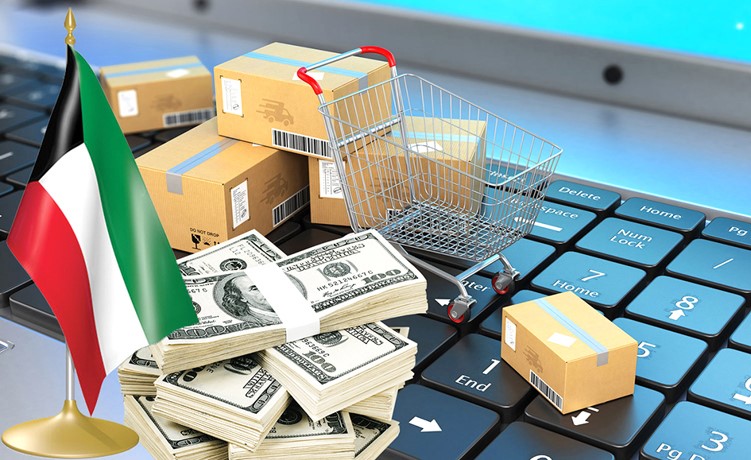Kuwait witnesses significant prosperity in its e-commerce industry
A hotspot in e-commerce activity, Kuwait has taken a giant leap from $600 million in 2018, to a staggering $1.5 billion in 2023, indicating a compound annual growth of 19.6%.

In a recent report about the retail sales sector in the GCC countries, it was revealed that the changing consumer behavior in Kuwait has led to significant growth in the country’s e-commerce industry, which has more than doubled over the past years, jumping from $600 million in 2018 to $1.5 billion in 2023.
Additionally, the sector’s contribution to the GDP reached 0.9% as of 2023, noting that e-commerce in the country witnessed a compound annual growth of 19.6% thereby gaining a stupendous momentum.
This occurred due to very high penetration of mobile phones and the Internet, and primarily due to increase in the number of young people, in addition to the shift of many retailers to digital platforms during the Covid-19 pandemic.
These trends continued with merchants focusing on improving economies of scale, enhancing operational efficiency, and diversifying revenues across digital channels.
Although despite the small retail sector in Kuwait compared to other Gulf countries, the country has one of the highest levels of international retail presence. Thanks to the spread of modern shopping malls and several online platforms.
Remarkably, several factors have contributed to the growth of the retail market in Kuwait, such as high population (with a CAGR of 1.4% between 2018 and 2023), followed with a strong expatriate base, rapid urbanization, and a high per capita GDP of $52.8 thousand in 2023.
In addition, individuals aged between 20 and 39 years constitute about 45% of the country’s population. This is a strong segment of the workforce that is highly inclined to spend on retail in malls and buy international brands.
These demographic dynamics have led to a change in lifestyle and have contributed in making Kuwait a prominent destination for a number of global luxury brands in establishing their strong presence in the country.
As a result, consumers in Kuwait are now keeping pace with their regional counterparts in terms of tastes with a growing demand for luxury goods and global brands.
The report also stated that the modern retail market (supermarkets/ hypermarkets) in Kuwait is witnessing a transformation with operators expanding to open many branches in the country.
Whereas, the local companies and cooperative societies still capture the majority of the market share through the main cooperative branches and branches within residential areas.
It is also noted that major stores have started offering e-commerce services in the country, with electronic distribution channels witnessing an amazing annual growth that not only encourages the entry of new players into the market, but also enhances the competitiveness of the retail sector.
This denotes that as of 2023, there were 1.7 million square meters of leasable space in Kuwait, which is up from 1.5 million in 2022, with further plans to build 173,050 square meters of retail space during 2024.
In addition, mall occupancy levels were relatively stable at 81.6% across existing inventory as of 2023. Whereas after the pandemic, the retail sector in Kuwait witnessed a significant development with the completion of 167,000 square meters of leasable space between 2020 and 2021.
When it comes to the Gulf region, the e-commerce industry in the GCC (excluding Bahrain) is estimated to grow at a CAGR of 20.2% to reach $21.2 billion in 2023, compared to $8.5 billion in 2018.
It is worth noting that the average annual e-commerce spending in Saudi Arabia and the UAE grew by 22.9% and 22.7% annually during the same period, with the UAE ($7.5 billion) and Saudi Arabia ($8.7 billion) estimated to together account for more than 76% of total e-commerce sales as of 2023.
On the other hand, e-commerce sales in Qatar are estimated to grow at a CAGR of 8.1% over the past five years to reach $2.8 billion in 2023, while Oman recorded the fastest growth among the GCC countries (at a CAGR of 32.7%) to reach $0.7 billion.
It is worth noting that the contribution of different sectors to e-commerce spending in the region has evolved as consumers continue to shop not only for electronics, fashion and beauty products, but also for food, groceries and home care products.
These rapidly changing consumer patterns are also leading to the evolution of business models for both traditional players and specialized e-commerce companies in the region.













